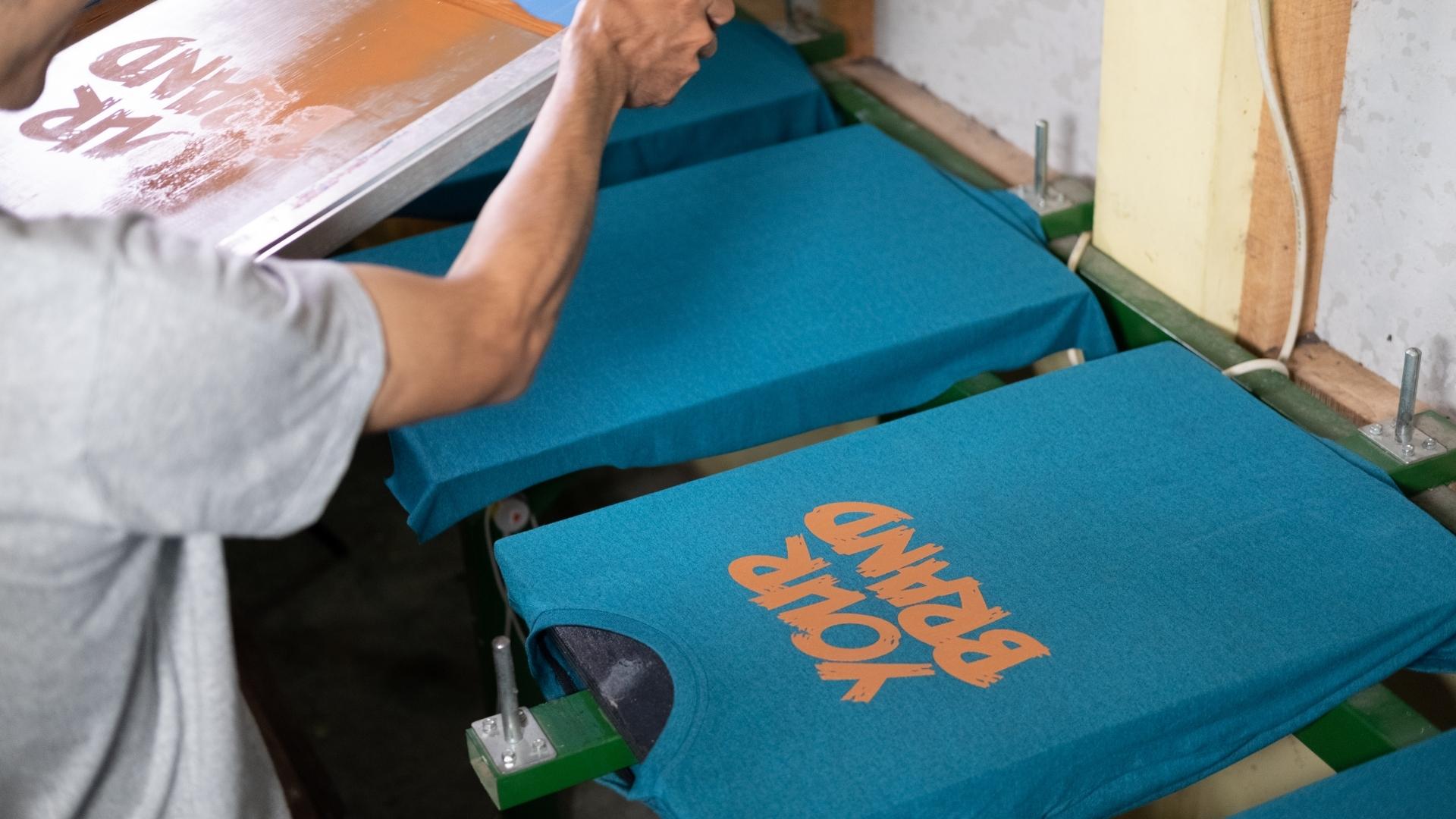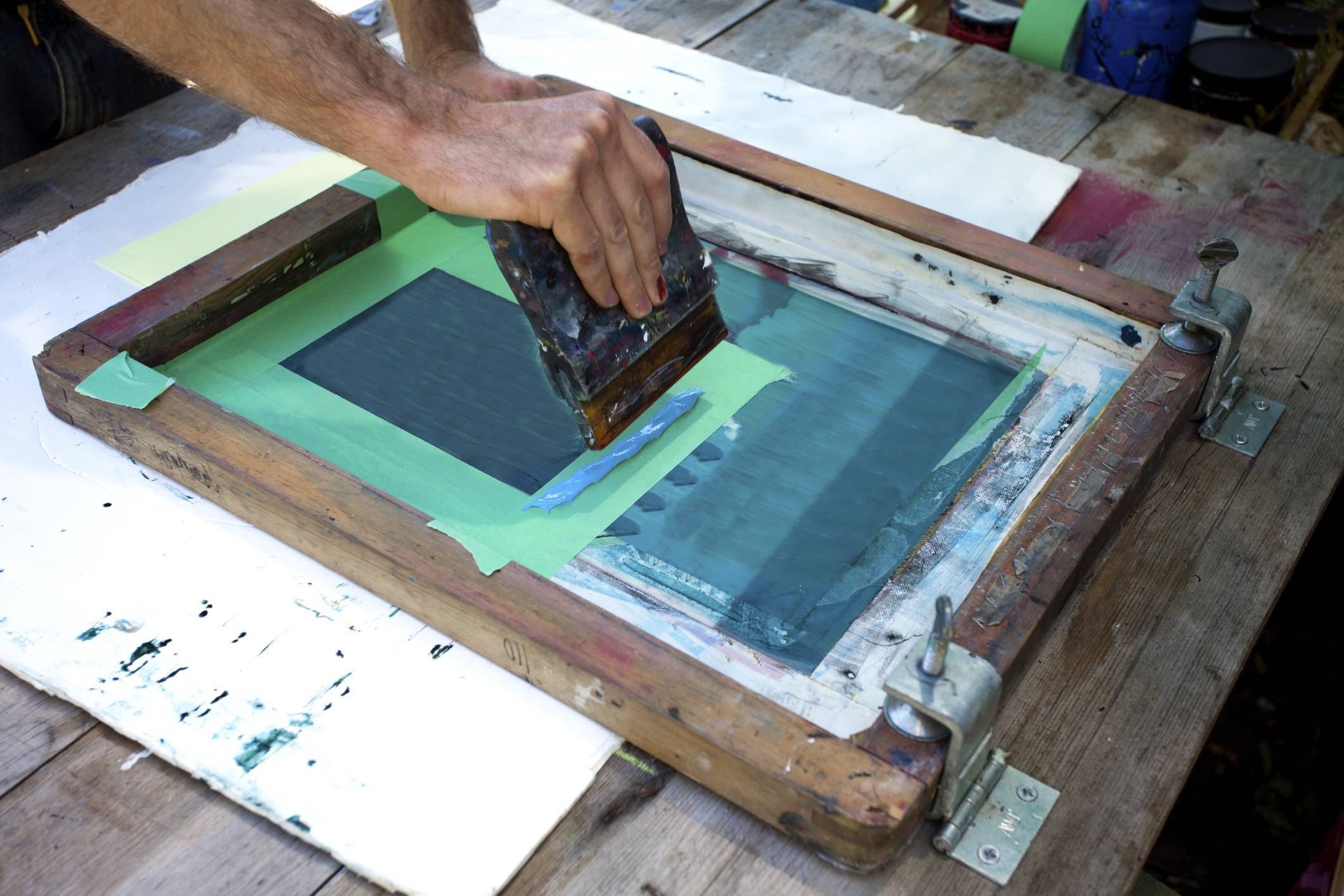Discover the Various Kinds Of Screen Printing Techniques for Your Next Job
Screen printing provides a diverse series of methods that can boost any imaginative project. From typical methods like serigraphy to modern-day advancements such as direct-to-garment printing, each approach has its one-of-a-kind benefits. Specialized choices, consisting of green and metallic inks, introduce much more opportunities. Comprehending these techniques can considerably affect the last end result. However, the difficulty depends on choosing one of the most suitable approach for specific requirements and desired impacts. What aspects should one consider?

The Fundamentals of Screen Printing
Screen printing may seem complicated, it is basically an uncomplicated process that includes transferring ink via a mesh screen onto various surfaces. The technique begins with the development of a pattern, which defines the layout to be published. This pattern is affixed to a mesh screen, commonly constructed from polyester or nylon. When the pattern is in area, ink is related to the screen and pushed through the mesh utilizing a squeegee, leading to the desired pattern being published on the underlying product.
Screen printing can be carried out on a broad array of substratums, including textile, paper, and plastic, making it a functional option for various jobs. The procedure permits detailed layouts and vivid shades, making it prominent in markets such as style, advertising and marketing, and art. Recognizing these basics furnishes individuals with the fundamental knowledge called for to discover more innovative techniques in screen printing.
Conventional Screen Printing Techniques
Standard screen printing techniques have actually been employed for centuries, protecting the workmanship and virtuosity of this method. This method utilizes a mesh screen to move ink onto a substratum, such as material or paper, permitting for dynamic and durable designs. The procedure starts with developing a pattern, which obstructs certain areas of the screen to manage where the ink will certainly be used.
One preferred technique is serigraphy, often utilized for restricted editions and artistic prints. One more is making use of water-based inks, which are environment-friendly and give a soft feel on textiles - 10:9 Design Texas. Additionally, traditional methods can include hands-on printing, where artisans use ink with a squeegee, making sure precision and attention to detail
These techniques continue to be valued in the market for their responsive high quality and the distinct appearances they produce, attracting both customers and designers that value the heritage of screen printing.
Digital Screen Printing Innovations
As the need for faster production and modification in the printing industry has actually risen, digital screen printing advancements have actually become a game-changer. This innovation blends traditional screen printing approaches with digital procedures, permitting rapid prototyping and detailed layouts that were previously difficult to accomplish. One substantial improvement is the introduction of direct-to-garment (DTG) printing, which promotes high-quality, full-color prints on various fabrics without the need for screens. In addition, developments in ink solutions have actually resulted in green options that maintain dynamic colors while lessening ecological influence. Making use of automated systems additionally simplifies manufacturing, minimizing labor prices and improving accuracy. These technologies not only accommodate small batch orders and customized styles yet additionally permit quicker turn-around times, making them perfect for organizations focused on meeting customer demands in a hectic market. Digital screen printing, consequently, represents a necessary evolution in the domain name of printing techniques.
Specialty Screen Printing Techniques
Checking out specialized screen printing techniques exposes a diverse array of techniques that push the boundaries of imagination and performance in the printing market. Among these, glow-in-the-dark inks supply an unique aesthetic impact, making styles come to life in low-light conditions. Metallic inks, known for their shimmering finish, include a touch of luxury to published products. An additional cutting-edge approach is discharge printing, which gets rid of color from the fabric as opposed to adding ink, resulting in a soft, vintage feeling. High-density printing develops an elevated structure on the surface, enhancing responsive involvement. Furthermore, water-based inks are gaining appeal for their dynamic colors and lowered ecological effect. Each of these specialized strategies deals with details style needs, allowing brand names and musicians to produce standout items that reverberate with their audiences. By leveraging these methods, organizations can raise their screen printing jobs to new elevations, guaranteeing memorable impressions.
Eco-Friendly Screen Printing Options
Environment-friendly screen printing choices are getting traction as the sector moves in the direction of sustainability. Sustainable ink options and the use of eco-friendly materials are crucial components in lowering the environmental effect of the printing process. By adopting these methods, screen printers can add to a much more sustainable future while maintaining premium outcomes.
Sustainable Ink Options

Biodegradable Materials Use
As the screen printing industry progresses, the incorporation of eco-friendly materials is becoming increasingly important for environmentally mindful techniques. Designers and makers are now discovering inks and substratums made from all-natural, sustainable sources that decompose much more successfully than standard equivalents. These eco-friendly options decrease plastic waste and minimize ecological influence, straightening with the expanding demand for sustainable items.
Typical examples include water-based inks and organic cotton materials, both of which lessen hazardous chemicals and promote eco-friendliness. Brands that adopt these products typically enhance their market allure, drawing in consumers that focus on sustainability. As awareness of environmental issues remains to rise, the shift towards biodegradable materials in screen printing is most likely to get momentum, promoting a greener industry requirement.
Choosing the Right Technique for Your Task
Just how can one figure out the most ideal screen printing technique for a details job? The choice rests on numerous variables, consisting of the product to be printed on, the complexity of the style, and the preferred production quantity - 10:9 Design Abilene. As an example, direct-to-garment printing is optimal for intricate layouts with countless shades, while standard screen printing stands out for larger runs of less complex graphics
Furthermore, consideration of the end-use of the published product is vital. For check here outdoor applications, methods that provide toughness and weather resistance, such as plastisol ink, might be chosen. Alternatively, environmentally-conscious jobs might gain from biodegradable materials or water-based inks.
Eventually, understanding the project's special requirements enables for an enlightened option, ensuring both aesthetic charm and functional durability. By evaluating style intricacy, product compatibility, and manufacturing scale, one can successfully select the most proper screen printing strategy to satisfy their project's goals.
Often Asked Inquiries
What Is the History of Screen Printing?
Screen printing came from in old China around 1000 AD, progressing with Japan and Europe. By the 20th century, it became prominent in industrial art and style, transforming exactly how styles were created and dispersed around the world.

How Do I Prepare Artwork for Screen Printing?
To prepare artwork for screen printing, one have to assure high resolution, make use of an appropriate color mode, develop separate layers for each shade, and convert message to describes, ensuring compatibility with the printing process and desired result.
What Materials Are Ideal for Screen Printing?
The very best products for screen printing consist of top quality inks, long lasting screens, and ideal substratums like cotton, polyester, or blends. In addition, using suitable solution and squeegees can improve the printing process and outcomes.
Can I Evaluate Print in your home?
Yes, screen printing at home is possible. With the appropriate materials, arrangement, and methods, people can create high-grade prints. Nonetheless, careful factor to consider of work space and equipment is necessary for successful outcomes.

What Prevail Errors in Screen Printing?
Common mistakes in screen printing consist of inappropriate exposure times, inadequate ink consistency, misalignment of displays, inadequate cleaning of products, and ignoring to evaluate prints. These mistakes can jeopardize the top quality and precision of the final item.
Screen printing may appear complicated, it is essentially a straightforward process that includes transferring ink via a mesh screen onto various surface areas. As the demand for faster production and personalization in the printing industry has surged, digital screen printing advancements have emerged as a game-changer. Discovering specialty screen printing approaches exposes a diverse range of methods that press the boundaries of creativity and capability in the printing industry. The best products for screen printing consist of high-grade inks, long lasting screens, and suitable substrates like cotton, polyester, or blends (10:9 Design LLC Company). Typical mistakes in screen printing consist of improper direct exposure times, insufficient ink consistency, misalignment of displays, inadequate cleansing of materials, and ignoring to examine prints